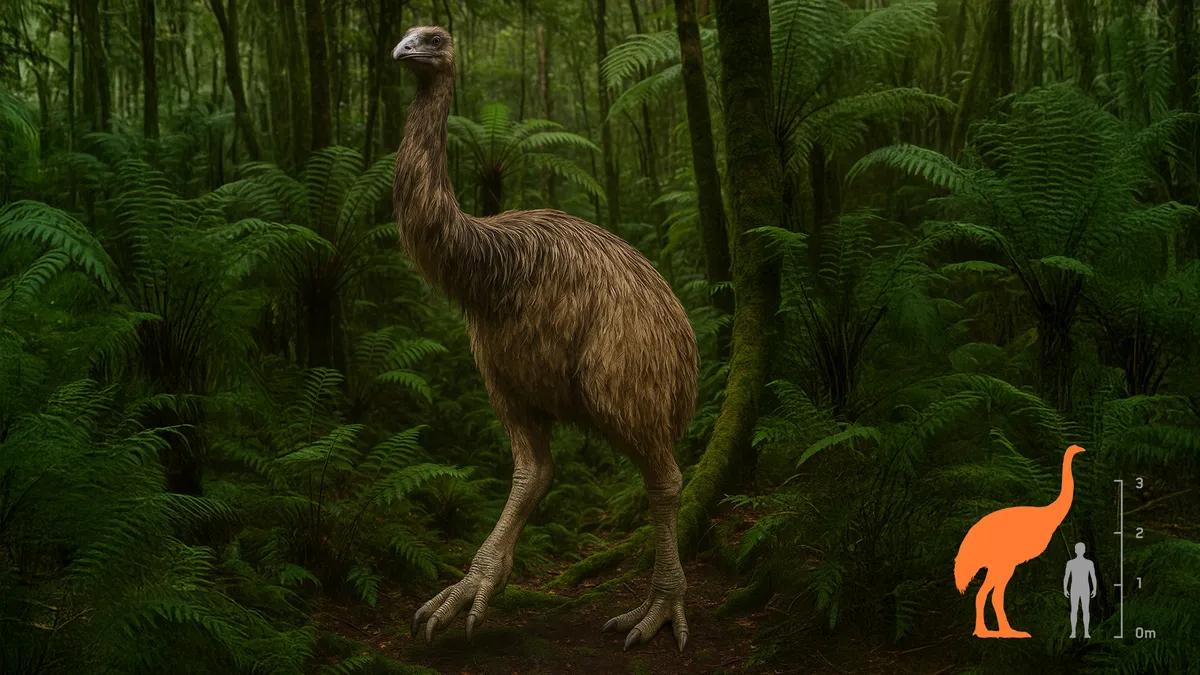
In a groundbreaking announcement, Colossal Biosciences, a Texas-based biotech company, has unveiled its ambitious plans to resurrect the giant extinct bird known as the moa. This endeavor follows their previous claim of bringing back the dire wolf, although experts cast doubt on the authenticity of that project. The latest initiative aims to revive the South Island giant moa (Dinornis robustus), a remarkable bird that stood approximately 12 feet tall (3.6 meters) and thrived in New Zealand until its extinction around 600 years ago, primarily due to hunting by early Māori settlers.
Colossal has partnered with renowned filmmaker Sir Peter Jackson and Indigenous groups to spearhead this multifaceted project. The initiative will be coordinated by the Ngāi Tahu Research Centre, a collaboration between the main Māori tribe (iwi) of the South Island and the University of Canterbury in Christchurch. This unique approach combines traditional Māori knowledge with cutting-edge wildlife conservation techniques and genetic engineering, aiming to create a sustainable model for de-extinction.
Despite the excitement surrounding the moa project, it has faced criticism from various quarters. Some Māori iwi are opposed to the concept of de-extinction, arguing that it may not align with their cultural values. Furthermore, numerous scientists have voiced skepticism about the feasibility of resurrecting lost species through genetic modification. This skepticism mirrors the backlash Colossal received after the unveiling of its dire wolves, which are genetically modified gray wolves (Canis lupus) with 20 gene edits but remain, genetically speaking, primarily gray wolves.
Bringing back the moa poses even greater challenges than the dire wolf project. The closest living relatives of the moa are a group of South American birds known as tinamous, with the largest species being smaller than most domestic chickens. Meanwhile, emus (Dromaius novaehollandiae) are another relative, yet they only grow to an average height of 5.7 feet (1.75 meters), significantly smaller than the giant moa. The evolutionary divergence between moa and their closest relatives stretches back millions of years, complicating the genetic engineering process.
According to Nic Rawlence, director of the Otago Palaeogenetics Lab at the University of Otago in New Zealand, the common ancestor of moa and tinamou lived approximately 58 million years ago, while the ancestor shared with emus dates back 65 million years. In contrast, dire wolves diverged from modern wolf-like canids around 5.7 million years ago, indicating that the moa have undergone extensive evolutionary changes.
Rawlence emphasizes that both moa and emus lost the ability to fly through a process known as convergent evolution. This means that while they share similar traits, their physiological and developmental mechanisms evolved independently, presenting a significant hurdle for geneticists attempting to resurrect the moa. Attempting to engineer an emu to exhibit moa traits could lead to unforeseen health complications due to this divergent evolutionary history.
Before embarking on the creation of modern-day moa, Colossal aims to sequence and reconstruct the genomes of all nine extinct moa species. This genomic research will also include high-quality sequencing of their closest living relatives, allowing scientists to pinpoint the genetic changes responsible for the moa's unique characteristics, such as their impressive size and flightlessness. According to Colossal, the research will utilize primordial germ cells from living species to create a surrogate bird capable of producing genetically modified offspring.
Colossal has indicated that they are considering emus as surrogates for the moa project, due to their larger size compared to tinamous. However, the exact details of the surrogate selection process remain vague. Notably, emus lay eggs that are significantly smaller than the colossal eggs of the South Island giant moa, which measured approximately 9.5 inches (24 cm) by 7 inches (17.8 cm) in diameter. This discrepancy means that Colossal may need to develop artificial surrogate egg technology to accommodate the larger moa eggs.
In response to inquiries about the potential health risks associated with genetic modifications, Colossal's Chief Science Officer, Beth Shapiro, reassured the public that animal welfare is a priority in their research. Colossal is committed to thoroughly evaluating any health risks associated with proposed genetic edits before finalizing their plans.
As Colossal continues its ambitious mission to resurrect the moa, the scientific community and Indigenous partners will be watching closely, weighing the implications of this groundbreaking venture in the realms of wildlife conservation and genetic engineering.